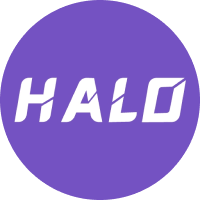Bitget: ติด 4 อันดับแรกตามปริมาณการเทรดรายวันทั่วโลก!
ส่วนแบ่งตลาด BTC62.56%
รายการลิสต์ใหม่บน Bitget : Pi Network
BTC/USDT$84566.79 (+0.80%)ดัชนีความกลัวและความโลภ31(กลัว)
ดัชนี Altcoin Season:0(Bitcoin Season)
เหรียญที่ลิสต์ใน Pre-MarketPAWS,WCTกระแสสุทธิของ Bitcoin Spot ETF ทั้งหมด: -$1M (1 วัน); -$872.6M (7 วัน)แพ็กเกจของขวัญต้อนรับสำหรับผู้ใช้ใหม่มูลค่า 6,200 USDTเคลมเลย
เทรดได้ทุกที่ทุกเวลากับแอป Bitget ดาวน์โหลดเลย
Bitget: ติด 4 อันดับแรกตามปริมาณการเทรดรายวันทั่วโลก!
ส่วนแบ่งตลาด BTC62.56%
รายการลิสต์ใหม่บน Bitget : Pi Network
BTC/USDT$84566.79 (+0.80%)ดัชนีความกลัวและความโลภ31(กลัว)
ดัชนี Altcoin Season:0(Bitcoin Season)
เหรียญที่ลิสต์ใน Pre-MarketPAWS,WCTกระแสสุทธิของ Bitcoin Spot ETF ทั้งหมด: -$1M (1 วัน); -$872.6M (7 วัน)แพ็กเกจของขวัญต้อนรับสำหรับผู้ใช้ใหม่มูลค่า 6,200 USDTเคลมเลย
เทรดได้ทุกที่ทุกเวลากับแอป Bitget ดาวน์โหลดเลย
Bitget: ติด 4 อันดับแรกตามปริมาณการเทรดรายวันทั่วโลก!
ส่วนแบ่งตลาด BTC62.56%
รายการลิสต์ใหม่บน Bitget : Pi Network
BTC/USDT$84566.79 (+0.80%)ดัชนีความกลัวและความโลภ31(กลัว)
ดัชนี Altcoin Season:0(Bitcoin Season)
เหรียญที่ลิสต์ใน Pre-MarketPAWS,WCTกระแสสุทธิของ Bitcoin Spot ETF ทั้งหมด: -$1M (1 วัน); -$872.6M (7 วัน)แพ็กเกจของขวัญต้อนรับสำหรับผู้ใช้ใหม่มูลค่า 6,200 USDTเคลมเลย
เทรดได้ทุกที่ทุกเวลากับแอป Bitget ดาวน์โหลดเลย


![ราคา QuickSwap [Old]](https://img.bgstatic.com/multiLang/coinPriceLogo/de508981b3947eca66fead9a590930311710263088098.png)
ราคา QuickSwap [Old]QUICK
ไม่ได้ลิสต์
สกุลเงินอ้างอิง:
THB
ข้อมูลมีแหล่งที่มาจากผู้ให้บริการบุคคลที่สาม หน้านี้และข้อมูลที่ให้ไว้ไม่ได้เป็นการสนับสนุนคริปโทเคอร์เรนซีใดๆ โดยเฉพาะ ต้องการเทรดเหรียญที่ลิสต์ไว้ใช่ไหม คลิกที่นี่
฿833.53-5.02%1D
ราคา
ตารางราคา QuickSwap [Old] (QUICK/THB)
อัปเดตล่าสุดเมื่อ 2025-04-14 15:15:59(UTC+0)
มูลค่าตามราคาตลาด:฿626,081,682.73
Fully Diluted Market Cap:฿626,081,682.73
ปริมาณ (24 ชม.):฿2,735,917.13
ปริมาณ 24 ชม. / มูลค่าตามราคาตลาด:0.43%
สูงสุด 24 ชม.:฿904.69
ต่ำสุด 24 ชม.:฿801.33
All Time High:฿460,975.02
All Time Low:฿723.92
อุปทานหมุนเวียน:751,118.06 QUICK
อุปทานทั้งหมด:
974,133.75QUICK
อัตราการหมุนเวียน:77.00%
อุปทานสูงสุด:
--QUICK
ราคาเป็น BTC:0.0002932 BTC
ราคาเป็น ETH:0.01496 ETH
ราคาจากมูลค่าตามราคาตลาด BTC:
฿75,125,638
ราคาจากมูลค่าตามราคาตลาด ETH:
฿8,950,080.81
สัญญา:
0x6c28...9446f2f(Ethereum)
เพิ่มเติม
คุณรู้สึกอย่างไรบ้างเกี่ยวกับ QuickSwap [Old] ในวันนี้
หมายเหตุ: ข้อมูลนี้ใช้สำหรับอ้างอิงเท่านั้น
รายงานการวิเคราะห์ AI สำหรับ QuickSwap [Old]
ไฮไลต์ตลาดคริปโตวันนี้ดูรายงาน
ราคา QuickSwap [Old] วันนี้เป็น THB
ราคา QuickSwap [Old] แบบเรียลไทม์วันนี้อยู่ที่ ฿833.53 THB โดยมูลค่าตามราคาตลาดปัจจุบันอยู่ที่ ฿626.08M ราคา QuickSwap [Old] ลง 5.02% ในช่วง 24 ที่ผ่านมาและมีปริมาณการเทรด 24 ชั่วโมงอยู่ที่ ฿2.74M อัตราการแปลง QUICK/THB (QuickSwap [Old] เป็น THB) อัปเดตแบบเรียลไทม์
ประวัติราคา QuickSwap [Old] (THB)
ราคาของ QuickSwap [Old] ปรับตัว -59.55% ในช่วงปีที่ผ่านมา ราคาสูงสุดของ เป็น THB ในปีที่แล้วอยู่ที่ ฿2,301.27 และราคาต่ำสุดของ เป็น THB ในปีที่แล้วอยู่ที่ ฿723.92
เวลาการเปลี่ยนแปลงราคา (%) ราคาต่ำสุด
ราคาต่ำสุด ราคาสูงสุด
ราคาสูงสุด 
 ราคาต่ำสุด
ราคาต่ำสุด ราคาสูงสุด
ราคาสูงสุด 
24h-5.02%฿801.33฿904.69
7d-7.76%฿801.33฿940.89
30d-10.20%฿760.33฿1,064.97
90d-38.14%฿723.92฿1,490.81
1y-59.55%฿723.92฿2,301.27
ตลอดกาล-93.53%฿723.92(2025-03-04, 41 วันที่ผ่านมา )฿460,975.02(2022-05-21, 2 ปีที่ผ่านมา )
ราคาสูงสุดของ QuickSwap [Old] คือเท่าไร
ราคา All Time High (ATH) ของ QuickSwap [Old] เป็น THB คือ ฿460,975.02 บันทึกไว้เมื่อ 2022-05-21 เมื่อเทียบกับ ATH ของ QuickSwap [Old] แล้ว ราคาปัจจุบันของ QuickSwap [Old] ลงอยู่ 99.82%
ราคาสูงสุดของ QuickSwap [Old] คือเท่าไร
ราคา All Time Low (ATL) ของ QuickSwap [Old] เป็น THB คือ ฿723.92 บันทึกไว้เมื่อ 2025-03-04 เมื่อเทียบกับ ATL ของ QuickSwap [Old] แล้ว ราคาปัจจุบันของ QuickSwap [Old] ขึ้นอยู่ 15.14%
การคาดการณ์ราคา QuickSwap [Old]
ราคา QUICK จะเป็นเท่าใดในปี 2026
จากโมเดลคาดการณ์ผลตอบแทนราคา QUICK ในอดีต คาดว่าราคา QUICK จะถึง ฿1,006.46 ใน 2026
ราคา QUICK จะเป็นเท่าใดในปี 2031
ในปี 2031 ราคา QUICK คาดว่าจะเปลี่ยนแปลง +13.00% โดยภายในสิ้นปี 2031 ราคา QUICK คาดว่าจะแตะ ฿1,837.81 และมี ROI สะสม +105.88%
คำถามที่พบบ่อย
ราคาปัจจุบันของ QuickSwap [Old] คือเท่าไร
ราคาแบบเรียลไทม์ของ QuickSwap [Old] อยู่ที่ ฿833.53 ตาม (QUICK/THB) โดยมีมูลค่าตามราคาตลาดปัจจุบันที่ ฿626,081,682.73 THB มูลค่าของ QuickSwap [Old] เผชิญกับความผันผวนถี่เนื่องจากตลาดคริปโตมีการเคลื่อนไหวอย่างต่อเนื่องตลอด 24 ชั่วโมงทุกวัน สามารถดูราคาปัจจุบันแบบเรียลไทม์และข้อมูลย้อนหลังของ QuickSwap [Old] ได้ที่ Bitget
ปริมาณการเทรด 24 ชั่วโมงของ QuickSwap [Old] คือเท่าไร
ในช่วง 24 ชั่วโมงที่ผ่านมา ปริมาณการเทรดของ QuickSwap [Old] คือ ฿2.74M
All Time High ของ QuickSwap [Old] คือเท่าไร
All Time High ของ QuickSwap [Old] คือ ฿460,975.02 All Time High คือราคาสูงสุดสำหรับ QuickSwap [Old] นับตั้งแต่เปิดตัวมา
ฉันสามารถซื้อ QuickSwap [Old] บน Bitget ได้หรือไม่
แน่นอน เพราะ QuickSwap [Old] พร้อมให้บริการแล้วบนแพลตฟอร์มแลกเปลี่ยนแบบรวมศูนย์ (Centralized Exchange) ของ Bitget สำหรับรายละเอียดการใช้งานเพิ่มเติม โปรดอ่านที่คู่มือ “วิธีซื้อ ” ของเรา
ฉันสามารถรับรายได้คงที่จากการลงทุนใน QuickSwap [Old] ได้ไหม
แน่นอน! Bitget ให้บริการ แพลตฟอร์มเทรดเชิงกลยุทธ์ พร้อมบอทเทรดอัจฉริยะเพื่อให้คุณเทรดและทำกำไรได้โดยอัตโนมัติ
ฉันจะซื้อ QuickSwap [Old] ด้วยค่าธรรมเนียมต่ำที่สุดได้จากที่ไหน
เรายินดีที่จะประกาศว่า แพลตฟอร์มเทรดเชิงกลยุทธ์ พร้อมให้บริการแล้วบนแพลตฟอร์มแลกเปลี่ยน Bitget Bitget มีค่าธรรมเนียมการเทรดและความลึกของตลาดระดับแนวหน้าในวงการ เพื่อการันตีว่านักเทรดจะได้รับผลกำไรจากการลงทุน
ยอดถือครอง QuickSwap [Old]
เมทริกซ์การกระจายยอดถือครอง QuickSwap [Old]
ยอดถือครอง QuickSwap [Old] ตามการกระจุกตัว
วาฬ
นักลงทุน
รายย่อย
QuickSwap [Old] Address ตามระยะเวลาถือครอง
ผู้ถือ
นักท่องเที่ยว
นักเทรด
กราฟราคา coinInfo.name (12) แบบเรียลไทม์

ราคา QuickSwap [Old] ทั่วโลก
ตอนนี้ QuickSwap [Old] มีมูลค่าเท่าไรในสกุลเงินอื่น อัปเดตล่าสุด: 2025-04-14 15:15:59(UTC+0)
QUICK เป็น MXN
Mexican Peso
$497.62QUICK เป็น GTQGuatemalan Quetzal
Q191.51QUICK เป็น CLPChilean Peso
$24,046.3QUICK เป็น UGXUgandan Shilling
Sh91,058.13QUICK เป็น HNLHonduran Lempira
L643.62QUICK เป็น ZARSouth African Rand
R468.33QUICK เป็น TNDTunisian Dinar
د.ت74.58QUICK เป็น IQDIraqi Dinar
ع.د32,526.58QUICK เป็น TWDNew Taiwan Dollar
NT$804.61QUICK เป็น RSDSerbian Dinar
дин.2,573.46QUICK เป็น DOPDominican Peso
$1,532.94QUICK เป็น MYRMalaysian Ringgit
RM109.63QUICK เป็น GELGeorgian Lari
₾68.31QUICK เป็น UYUUruguayan Peso
$1,066.79QUICK เป็น MADMoroccan Dirham
د.م.230.13QUICK เป็น OMROmani Rial
ر.ع.9.56QUICK เป็น AZNAzerbaijani Manat
₼42.21QUICK เป็น KESKenyan Shilling
Sh3,216.68QUICK เป็น SEKSwedish Krona
kr241.33QUICK เป็น UAHUkrainian Hryvnia
₴1,025.12- 1
- 2
- 3
- 4
- 5
รายการลิสต์ใหม่บน Bitget
รายการลิสต์ใหม่
ซื้อเพิ่ม
จะซื้อคริปโตได้ที่ไหน
ส่วนวิดีโอ — ยืนยันฉับไว เทรดได้รวดเร็ว

วิธียืนยันตัวตนบน Bitget ให้เสร็จสิ้นและป้องกันตนเองจากการฉ้อโกง
1. เข้าสู่ระบบไปยังบัญชี Bitget ของคุณ
2. หากคุณเป็นผู้ใช้ใหม่ของ Bitget โปรดดูบทช่วยสอนของเราเรื่องวิธีสร้างบัญชี
3. ชี้เมาส์ไปที่ไอคอนโปรไฟล์ของคุณ จากนั้นคลิกที่ “ไม่ได้รับการยืนยัน / Unverified” แล้วคลิก “ยืนยัน / Verify”
4. เลือกประเทศหรือภูมิภาคที่ออกและประเภทเอกสารระบุตัวตนของคุณ แล้วทำตามขั้นตอนที่ปรากฏ
5. เลือก “การยืนยันทางโทรศัพท์มือถือ / Mobile Verification” หรือ “PC” ตามต้องการ
6. ป้อนรายละเอียดของคุณ ส่งสำเนาเอกสารระบุตัวตน และถ่ายภาพเซลฟี
7. ส่งใบสมัครของคุณ เท่านี้ก็เรียบร้อย คุณเสร็จสิ้นการยืนยันตัวตนแล้ว!
การลงทุนในคริปโทเคอร์เรนซี รวมถึงการซื้อ QuickSwap [Old] ออนไลน์ผ่าน Bitget นั้นอยู่ภายใต้ความเสี่ยงในตลาด Bitget พร้อมให้บริการวิธีที่ง่ายดายและสะดวกสำหรับซื้อ QuickSwap [Old] และเราจะพยายามอย่างสุดความสามารถเพื่อให้ข้อมูลผู้ใช้เกี่ยวกับคริปโทเคอร์เรนซีแต่ละรายการที่เรามีให้บริการบนแพลตฟอร์ม อย่างไรก็ตาม Bitget จะมิได้มีส่วนรับผิดชอบต่อผลลัพธ์ที่อาจเกิดขึ้นจากการซื้อ QuickSwap [Old] ของคุณ หน้านี้และข้อมูลที่อยู่ในหน้านี้ไม่ใช่การสนับสนุนคริปโทเคอร์เรนซีรายการใดรายการหนึ่งแต่อย่างใด
แหล่งข้อมูล QUICK
แท็ก:
เรตติ้ง QuickSwap [Old]
เรตติ้งโดยเฉลี่ยจากชุมชน
4.4
คอนเทนต์นี้มีจุดประสงค์เพื่อให้ข้อมูลเท่านั้น
Bitget Insights

Smith001
7ชม.
Mastering the $BABY Coin Wave: Pro Trading Strategies Unveiled
Meme coins like $BABY may start as jokes, but seasoned traders know that behind the humor often lies opportunity. Volatile, community-driven, and fast-moving, $BABY Coin offers an environment ripe for skilled trading—but only for those equipped with the right strategy.
In this article, we unveil the pro-level tactics that can help you ride the $BABY wave with confidence, maximize gains, and protect your capital.
Understanding $BABY's Unique Market Dynamics
Before jumping into strategies, it's critical to understand what sets $BABY apart from typical altcoins:
High volatility: Price can spike or dump within minutes, often driven by sentiment or social buzz.
Community-driven movement: Unlike fundamentally-backed tokens, $BABY’s momentum often hinges on tweets, memes, influencer activity, or viral content.
Thin liquidity zones: $BABY may experience sharp moves due to relatively low liquidity in certain ranges, creating both risk and opportunity.
With this in mind, let’s look at how pros navigate this space.
1. Scalping with Precision: Quick In, Quick Out
Best for: Experienced traders with time to monitor charts closely.
Scalping $BABY Coin involves exploiting small price fluctuations within a short time frame—often minutes to hours. Given $BABY’s rapid movements, scalping can be highly profitable.
How to do it:
Use 1-minute to 15-minute charts to identify micro-trends.
Look for breakouts above consolidation zones with rising volume.
Use tight stop-losses (2–3%) and target quick profits (5–10%).
Tools to use: Bollinger Bands, Volume Oscillators, EMA crossovers.
Key tip: Don’t chase green candles. Enter during consolidation, exit before hype dies.
2. Swing Trading: Catching the Bigger Moves
Best for: Traders looking for multi-day to multi-week opportunities.
$BABY often moves in waves. After hype-driven rallies, the coin enters consolidation phases—offering perfect entry points for swing trades.
How to do it:
Identify key support and resistance levels on the 4-hour and daily charts.
Wait for a pullback to a demand zone, combined with a bullish candlestick pattern (e.g., hammer, engulfing).
Set a stop-loss just below the support, and aim for 2x–3x reward-to-risk ratios.
Ideal conditions: Consolidation following a rally, or breakout from a falling wedge.
3. Sentiment-Driven Trading: Reading the Crowd
Best for: Traders who stay tapped into crypto social media.
Unlike blue-chip tokens, $BABY’s price action often correlates directly with sentiment spikes. Twitter/X trends, Telegram buzz, and meme virality all play a role.
How to do it:
Monitor platforms like LunarCrush, DexTools trending, or X hashtag volume.
Buy into dips during growing sentiment, not at the peak of euphoria.
Look for engagement surges from key influencers in the $BABY space.
Caution: Sentiment trades require fast reactions and tight exit plans.
4. Risk Management: The Silent Superpower
Even the best strategy fails without disciplined risk control. Meme coins like $BABY can yield high returns—but they can also crash just as fast.
Risk management principles:
Never risk more than 1–2% of your portfolio per trade.
Use stop-losses, and avoid “hope-holding” positions during downtrends.
Take partial profits at key levels to lock in gains while letting the rest ride.
Bonus tip: Consider using a trailing stop after a strong move to capture upside while protecting your position.
5. Smart Entry Timing: Avoiding FOMO Traps
Many traders lose money on $BABY by buying at the top of a hype cycle. The pros wait.
Pro timing strategies:
Use the “Buy the Fear, Sell the Hype” approach—enter when sentiment is low but fundamentals are intact.
Enter on retests of broken resistance now acting as support.
Watch for volume divergence—increasing price with decreasing volume is often a sign of exhaustion.
Conclusion: Ride the $BABY Wave, Don’t Get Wrecked
Trading $BABY Coin successfully isn’t about gambling on hype—it’s about understanding patterns, managing risk, and staying ahead of sentiment swings. Whether you’re scalping short moves or positioning for longer swings, the key is discipline over emotion.
Meme coins are unpredictable, but with the right tools and mindset, $BABY can be more than just a meme—it can be a serious trading opportunity.
Remember: Surf the wave, but always know where the exit is.$BABY
X+1.37%
BLUE+4.02%

Tajoo_nakamato
8ชม.
$RFC Trading Strategy - $RFC wild swings offer scalping opportunities but require precision. Watch MA(5) and volume trends for entries, with quick profit-taking. The +83.58% move suggests potential exhaustion - beware of sharp reversals. Always use stop-losses in such volatile conditions. #MemeCoin #Trading
MOVE-1.34%
RFC+0.17%
commatozee
8ชม.
$RFC 's wild swings offer quick profits for active traders. Watch MA(5) and volume trends for entry points. Set tight stop-losses! #MemeCoin #Trading
RFC+0.17%
WILD+5.83%

LoxxBTC
8ชม.
Might be a quick dip
QUICK+1.79%

Crypto-Ticker
12ชม.
Crypto Crash Hits Hard: 5 Cryptos That Collapsed in 24 Hours
This week started rough for the crypto market , with a 3% drop in just one day. Red dominated the charts as traders scrambled to reassess their positions. Ongoing global trade tension and cooling momentum from previous rallies contributed to the downturn, putting pressure on major assets and altcoins alike.
Bitcoin ( BTC ) slipped below the $84,000 mark, now trading at $83,100. While the dip isn’t massive, it’s enough to shake confidence and hint at possible further downside.
Ethereum ( ETH ) took a heavier blow, losing 4% and dropping under the $1,600 line to $1,580. This move erased some of ETH’s recent recovery and placed the coin back in bearish territory.
Meanwhile, XRP also dropped by 4%, falling dangerously close to the $2 threshold again. After its recent rebound, XRP now risks a breakdown if market conditions worsen.
Total crypto market cap in USD over the last 24 hours - TradingView
While the majors struggled, some altcoins took a brutal beating. Below are the top 5 crypto losers from the past 24 hours:
MANTRA (OM) led the collapse with an 80.19% crash in a single day, marking one of the most dramatic drops of the year so far. Read here what happened to Mantra OM price, as it might seem to have been rug-pulled.
The market correction could be temporary—or signal the start of a broader pullback. With Bitcoin, Ethereum, and XRP teetering on key support levels, the next 48 hours are crucial.
If global trade conflicts continue and investor uncertainty grows, we might see further losses. On the other hand, any shift toward resolution or bullish momentum could trigger a quick bounce.
This week started rough for the crypto market , with a 3% drop in just one day. Red dominated the charts as traders scrambled to reassess their positions. Ongoing global trade tension and cooling momentum from previous rallies contributed to the downturn, putting pressure on major assets and altcoins alike.
Bitcoin ( BTC ) slipped below the $84,000 mark, now trading at $83,100. While the dip isn’t massive, it’s enough to shake confidence and hint at possible further downside.
Ethereum ( ETH ) took a heavier blow, losing 4% and dropping under the $1,600 line to $1,580. This move erased some of ETH’s recent recovery and placed the coin back in bearish territory.
Meanwhile, XRP also dropped by 4%, falling dangerously close to the $2 threshold again. After its recent rebound, XRP now risks a breakdown if market conditions worsen.
Total crypto market cap in USD over the last 24 hours - TradingView
While the majors struggled, some altcoins took a brutal beating. Below are the top 5 crypto losers from the past 24 hours:
MANTRA (OM) led the collapse with an 80.19% crash in a single day, marking one of the most dramatic drops of the year so far. Read here what happened to Mantra OM price, as it might seem to have been rug-pulled.
The market correction could be temporary—or signal the start of a broader pullback. With Bitcoin, Ethereum, and XRP teetering on key support levels, the next 48 hours are crucial.
If global trade conflicts continue and investor uncertainty grows, we might see further losses. On the other hand, any shift toward resolution or bullish momentum could trigger a quick bounce.
BTC+0.81%
ETH+3.59%
สินทรัพย์ที่เกี่ยวข้อง
คริปโทเคอร์เรนซียอดนิยม
รายการคริปโทเคอร์เรนซีที่มีมูลค่าตามราคาตลาดสูงที่สุด 8 อันดับแรก
เพิ่มเมื่อเร็วๆ นี้
คริปโทเคอร์เรนซีที่เพิ่มเข้ามาล่าสุด
มูลค่าตามราคาตลาดที่เปรียบเทียบกันได้
ในบรรดาสินทรัพย์ Bitget ทั้งหมด 8 สินทรัพย์เหล่านี้มีมูลค่าตามราคาตลาดใกล้เคียงกับ QuickSwap [Old] ที่สุด
ข้อมูลเพิ่มเติมเกี่ยวกับ QuickSwap [Old]
ที่เกี่ยวข้องกับเหรียญ
ที่เกี่ยวข้องกับการเทรด
ข้อมูลอัปเดตเกี่ยวกับเหรียญ
























.png)







![Quickswap [New]](https://img.bgstatic.com/multiLang/coinPriceLogo/23e5466969665fe7482af6bb112992ac1710263425091.png)
